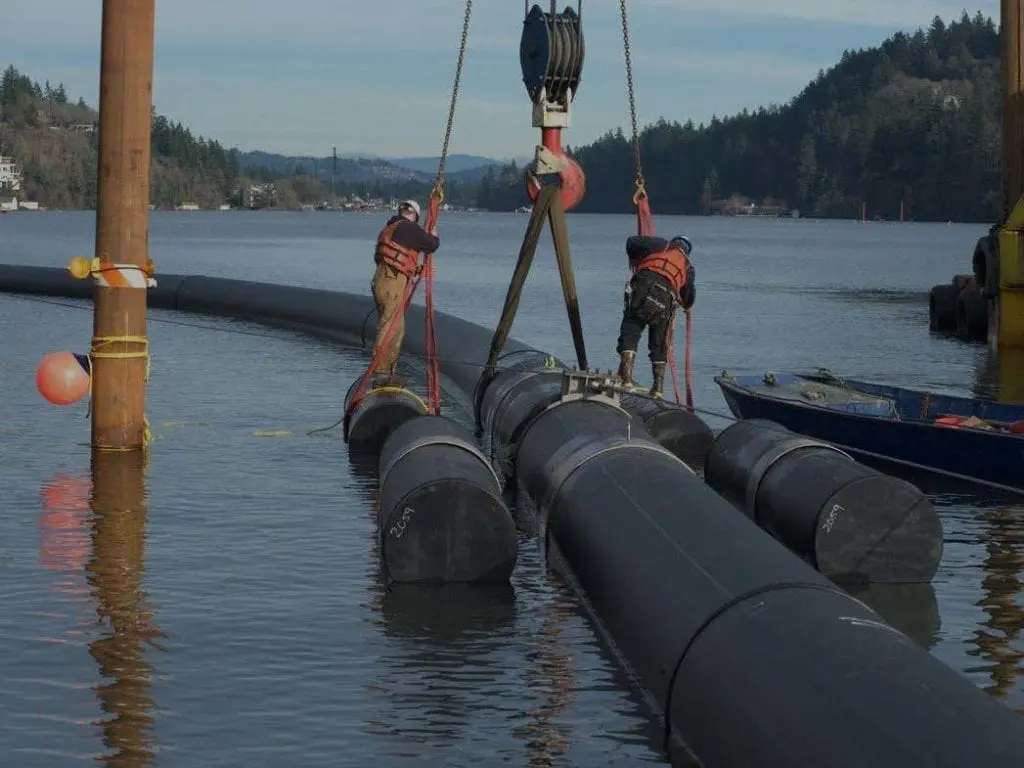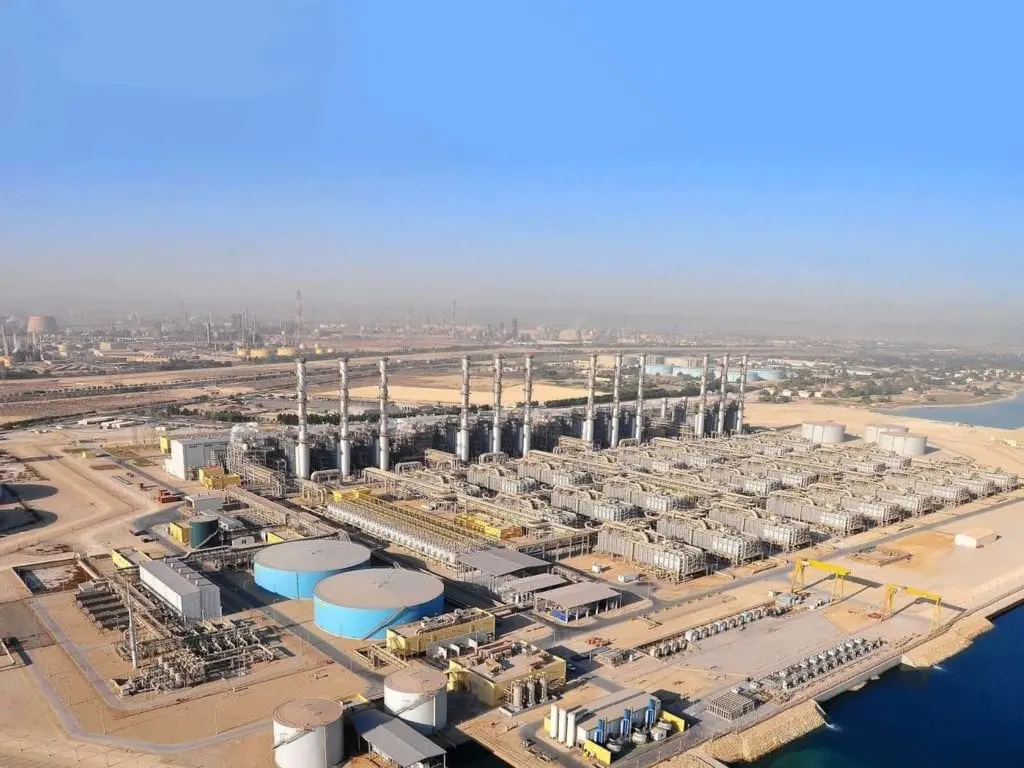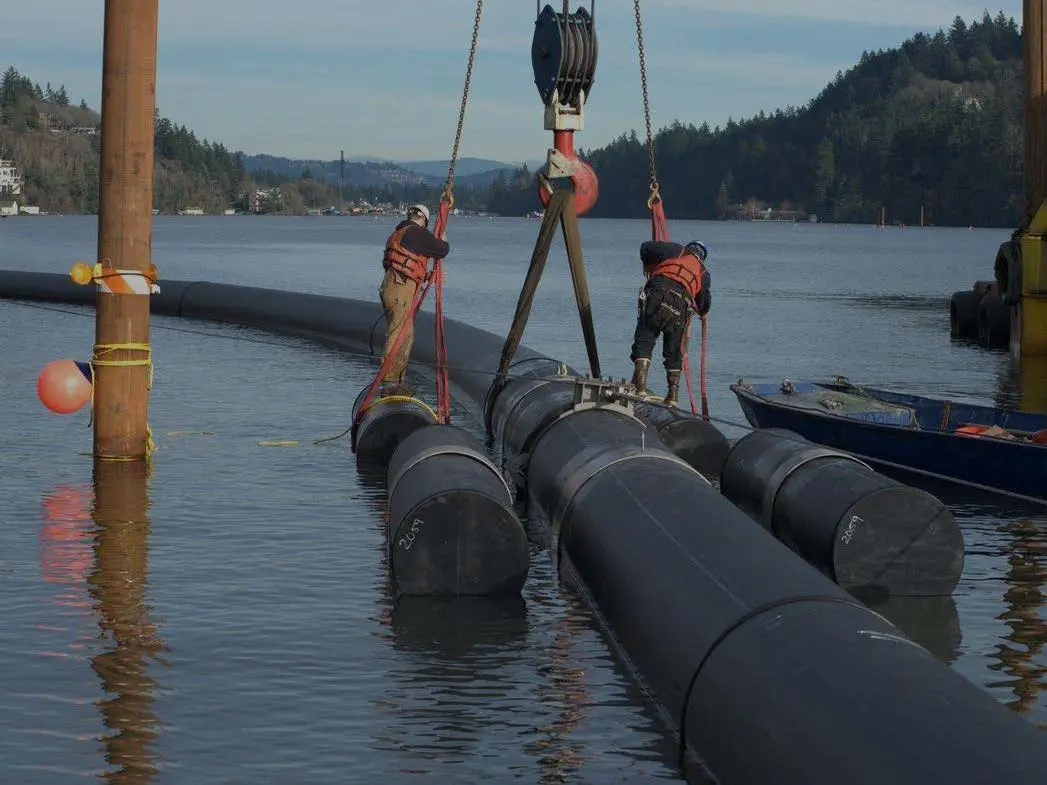This story features in Unearthed: The Age Of Data

29,000FT (or 8.8km)
Since the early 1960s nearly 20,000ft (6km) of sewer pipe have lain a few metres below the surface of Oregon’s Lake Oswego, transporting flows to Portland’s water treatment plants. But by 2009 Lois, (that’s the Lake Oswege Interceptor Sewer) could no longer meet demand. It had also corroded badly and risked spilling millions of gallons of raw sewage into the lake. The answer? Replace it with 29,000 ft of buoyant pipe that would float just under the surface, tethered to the lake floor by 428 anchors. Cunningly its serpentine design still maintained the gravity line that meant elevation changes from west to east would keep material moving without pumping (saving $20m in pumping stations and costs). The $100m project was completed on time, 10% under budget, and won an innovation award from the American Public Works Association.

20,000 Workers
The $80 billion expansion of Jubail in the Eastern Province of Saudi Arabia is one of the largest civil engineering projects ever seen. Jubail 2 – which includes the addition of two ports, a 9km causeway, more than 860 kms of roads and 63 bridges – called for more than 20,000 workers at its peak, and will double the size of the city. Construction began in 2014 and has been broken into four phases, with the final 50,000 residential units expected in the mid-2020s. The earthworks alone will move more than 30 million m3 of aggregates, while a desalination plant will process 800,000 m3/d of water and generate 2,750 megawatts of electricity. The resulting 83km2 complex is the world’s largest single industrial development project.
